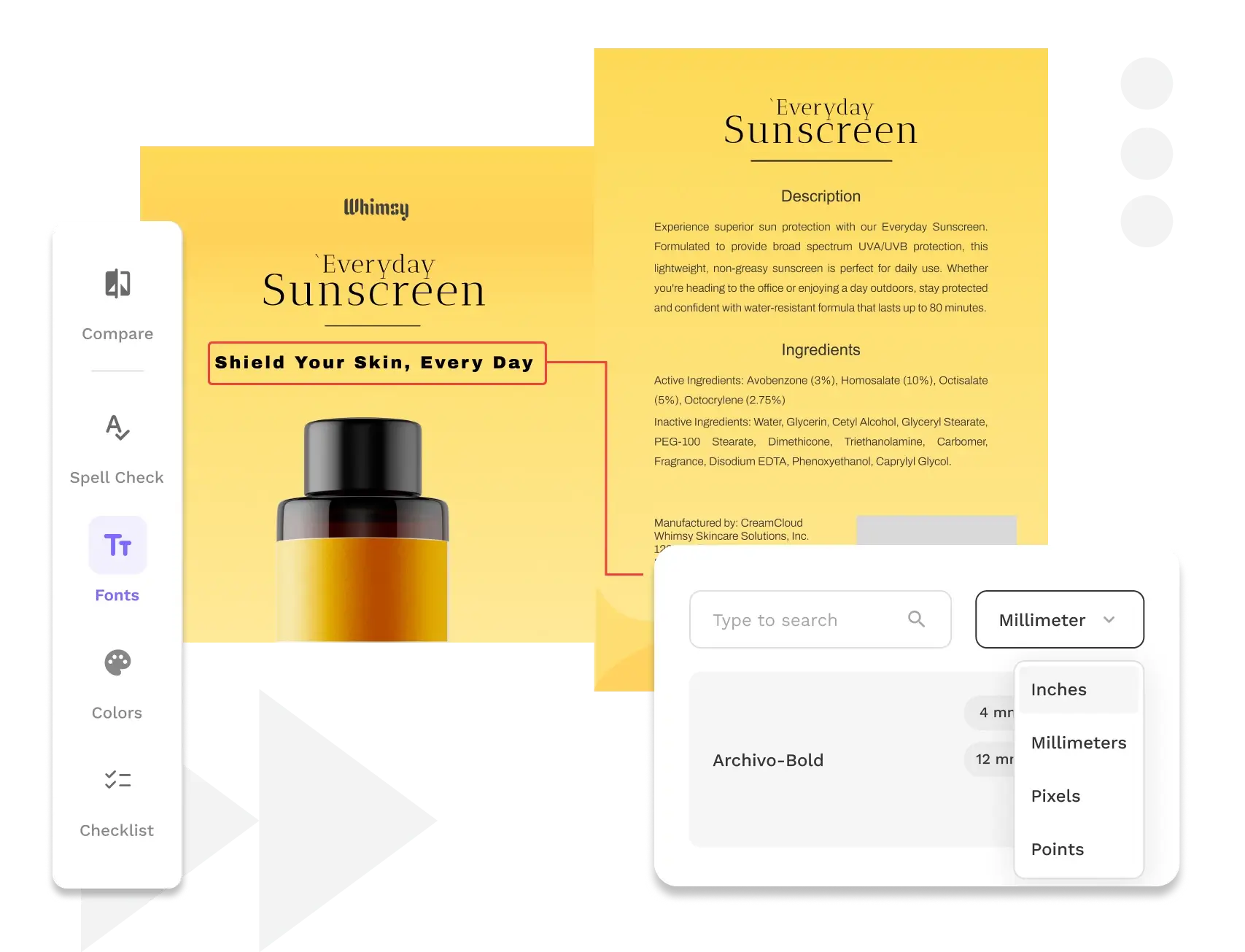Recently, one of the participants from our webinar on “The new FSSAI regulation: What Indian brands must do next” asked us a question on legal metrology. And, it was a timely reminder that for packaging teams, compliance isn’t just about one rulebook but it’s about navigating several, all at once.
Imagine this: your product is ready for launch, marketing campaigns are lined up, and the first print run of your packaging has just been delivered, only to find out that the MRP font size is 0.5 mm smaller than the Legal Metrology requirement.
What follows? A costly reprint, launch delays, and the perfect opening for competitors to get ahead.
For FMCG and CPG brands, these slip-ups are more common than you think. The Legal Metrology Packaged Commodities Rules, 2011 specify exactly what must be displayed on your pack and how. One missed detail can trigger fines, product recalls, and lasting damage to brand credibility.
This guide breaks down the essentials of Legal Metrology compliance, so your packaging is market-ready, audit-proof, and error-free from day one.
What is Legal Metrology?
Legal Metrology refers to the regulation of weights, measures, and packaging to ensure fair trade and consumer protection. In India, it’s governed by the Legal Metrology Act, 2009, along with the Packaged Commodities Rules, 2011, which define how information must be displayed on pre-packaged goods.
Key provisions of legal metrology rules
Here are some of the rules and impositions that legal metrology has mandated for your pre-packaged goods that you must follow:
- Name and address
- You have to list the name of the manufacturer or packer.
- For imported goods, the importer must list the name, address, and the country of origin/manufacture/assembly.
- Product identity
- Use the common or generic name of the commodity (not just the brand name).
- If multiple products are in a package, specify the name and quantity of each product.
- Net quantity
Provide the net quantity of the product in standard units of measurement such as kilograms, meters, liters, and more.
- Best before / use by date
Legal Metrology Packaged Commodities Rules 2011 (LMPC) has mandated adding “Use by” date, especially for perishable commodities, which also helps the consumer understand the shelf-life before use.
- Pricing details
- The format of the Maximum Retail Price (MRP) in Indian rupees is standardized, inclusive of all taxes.
- If provided, the unit sale price would be rounded to the nearest two decimals.
- Grievance redressal / customer care
You must include name, address, telephone, and email for consumer complaints.
- Penalties
Penalties for non-compliance have been revised, with updated fine amounts specified for different categories of offenses.
Why legal metrology (or any) compliance fails in packaging workflows
Packaging compliance is like a chain. If even one link is weak, the whole thing fails. Tight deadlines, complex approval cycles, and multiple teams handling the same file create plenty of room for ambiguity.
Legal metrology demands precision, but in fast-moving packaging workflows, precision is often the first casualty.
1. Manual checks are error-prone
Even seasoned QA and regulatory teams can miss small inconsistencies when manually reviewing labels across SKUs. When you’re scanning for font sizes, unit spacing, punctuation, and declaration order, the human eye simply can’t guarantee 100% accuracy every time.
2. Rules change often
LMPC rules are updated periodically and keeping up with these changes while balancing multiple product launches becomes a challenge. Missing an amendment can mean the entire pack design is already outdated by the time it hits shelves.
3. Last-minute changes break compliance
A simple copy tweak, a resized ingredient list, or a shifted MRP placement during the final design stage can push the pack out of compliance. These small changes often go unnoticed if they aren’t rechecked against the rulebook before final approval.
4. Scattered communication
When marketing, compliance, and NPD teams exchange feedback via emails, chats, and shared drives, version control suffers. Critical compliance notes may get buried, overlooked, or applied to the wrong artwork file.
What’s at stake if you get it wrong
1. Fines and penalties
A first-time violation under Legal Metrology can cost up to Rs. 25,000. Repeat offenses attract higher fines or even legal action damaging your brand’s reputation.
2. Product recalls
If a non-compliant pack is already in retail, authorities can order it off the shelves. This not only disrupts sales but also erodes trust with distributors and retailers.
Also read: Product Recall: How to Save Yourself from the Mess
3. Loss of market credibility
Consumers notice missing or incorrect declarations, especially on sensitive details like MRP, net quantity, or “best before” dates. Over time, this chips away at your brand image.
4. Launch delays
If a compliance issue is spotted at the last stage, you’ll need to halt production, fix the artwork, and re-approve it, giving competitors the perfect window to beat you to market.
How Artwork Flow can help you here
To keep the team collaboration intact and your labels updated, a system is what you need in place more than a nitty gritty manual process. That’s where Artwork Flow enters.
Our artwork management system is an all-in-one solution that automates your packaging workflows and keeps your labels honest. Here’s how:
1. Smart compliance checks built into your workflow
Artwork Flow’s smart compliance tool lets you upload your LMPC labeling regulations into our rulebooks, so every artwork goes through automated, rule-based verification before approval. You can set up:
- Font size requirements for net quantity, MRP, and manufacturing date.
- Rules for detecting mandatory declarations (like allergen info) on the Principal Display Panel.
- Guidelines for standard units (g, kg, ml, L) and correct MRP formatting.
2. AI-powered text and font detection
No more squinting at artwork to check if the height of the MRP is 3mm high. Artwork Flow’s online proofing tool can detect and measure font sizes to match LMPC requirements and flag any typos instantly.

3. Version control that keeps compliance intact
Every time a change is made, whether by marketing, design, or NPD team, Artwork Flow keeps track, so no compliant element is accidentally altered.
Also read: The Ultimate Guide to Efficient Version Control
4. Centralized review & on-time approvals
All stakeholders, including design, brand, regulatory, and legal teams can review and annotate the same artwork version in real-time. This means compliance concerns are addressed before the file hits the printer.

With the right system, you can protect your brand, timelines, and customers by being label compliant.
Artwork Flow helps FMCG and CPG brands cut compliance errors to zero, speed up approvals, and launch confidently, every single time.
Book a demo today to see how you can make Legal Metrology compliance effortless.








_2.jpg)




%20(1).png)







